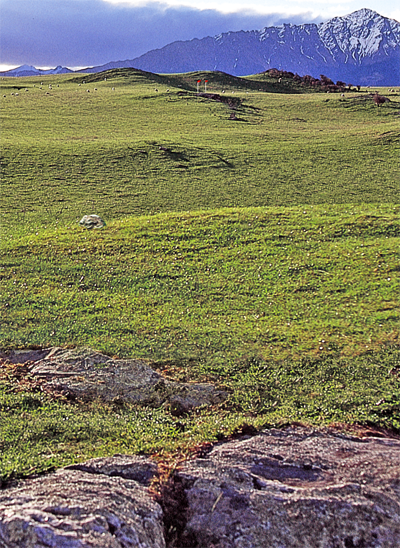Eco-friendly Golf with the amazing Oval Ball

Because GolfCross fairways need no artificial watering and don’t have greens that require the use of pesticides herbicides or fertilizers, GolfCross is now recognized as the world’s first genuinely eco-friendly game of golf.
Its secret to its organic status is the oval ball.
Golf courses require huge amounts of water not only to keep them looking nice and green but mainly to ensure they maintain resistance to the run of the ball.*
If fairways become dry and hard the conventional round ball runs on too far and makes a nonsense of par values.
This is where the oval ball comes in. When it’s back spinning it stops down very quickly even on a dry fairway. That’s because its two pointed ends dig in like the cogs of a wheel as opposed to the smooth surface of the round ball that has almost no back grip. And unlike the round golf ball, the oval ball is easy for any golfer to backspin simply by setting it up in a vertical position.
Because it uses an aerial target as opposed to a little hole in the ground, GolfCross doesn’t have to have manicured greens. In order to maintain a smooth putting surface these require frequent use of pesticides, herbicides and artificial fertilisers to keep them in top condition. But while being extremely successful in their main objective, these chemicals have been shown to have a devastating effect on the environment. They can contaminate groundwater and sometimes leak into the ocean. Also, while being very effective against pests and weeds, pesticides and herbicides are unfortunately very deadly for many native plant and animal species.
The only turf maintenance required for a GolfCross course is mowing the grass to a height where the ball can be seen. Irrigation and the use of agricultural chemicals is not necessary.
* According to a United Nations Environment Program report:
“ Golf course maintenance can deplete fresh water resources. Golf courses require an enormous amount of water every day and, as with other causes of excessive extraction of water, this can result in water scarcity. If the water comes from wells, over-pumping can cause saline intrusion into groundwater. Golf resorts are more and more often situated in or near protected areas or areas where resources are limited, exacerbating their impacts. ”
“ Golf course turf usually needs water applied at least twice per week in the summer. Any deficit in rainfall must be supplemented with irrigation. A typical golf course requires 100,000 to 1,000,000 gallons (378.5 m3 to 3,785 m3) of water per week in summer to maintain healthy vegetation. ”
There are 866 golf courses in California. An average 18-hole course uses 90 million gallons of water each year. That's enough to fill 136 Olympic-sized swimming pools. Similarly, a 100,000 square foot waterpark resort might use on average 125,000 to 160,000 gallons of water per day. These figures indicate that golf courses consume more water on a daily basis than a typical Page 4 waterpark resort, and consume significantly more water than the waterpark component itself.

